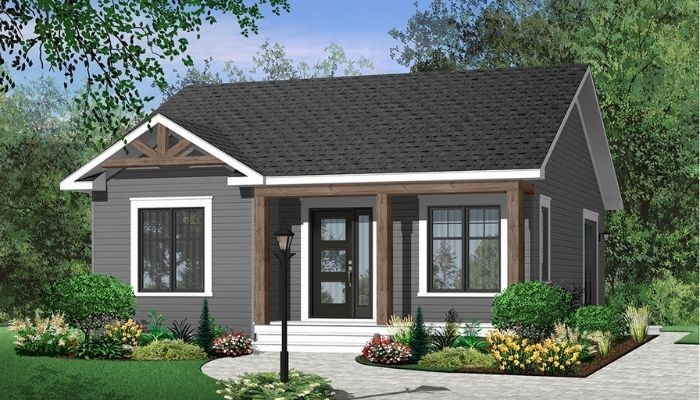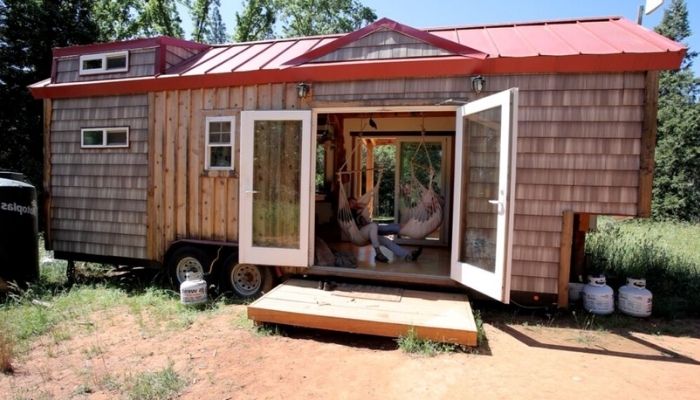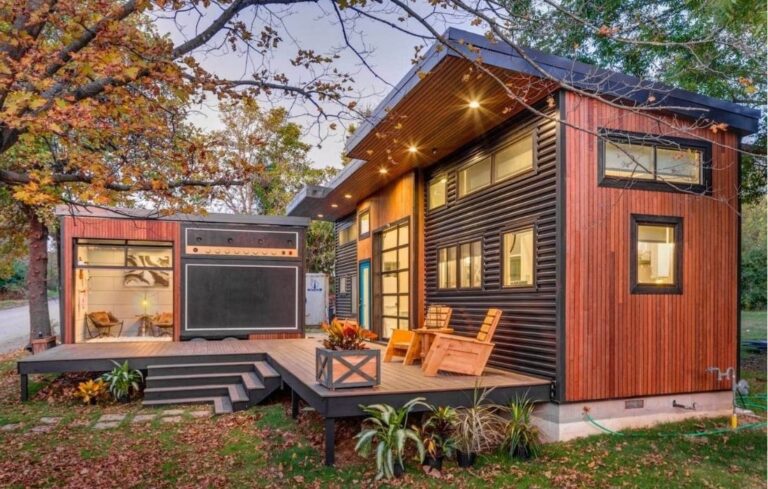In recent years, the allure of minimalist living has captured the imaginations of many, leading to a surge in the popularity of tiny homes. These compact abodes offer an alternative to traditional housing, championing sustainability, affordability, and a simpler way of life. This article delves into various tiny home designs, shedding light on their functionality, aesthetic appeal, and the innovative solutions they provide for modern living.
What is a Tiny Home?
Tiny homes are typically defined as residential structures under 400 square feet. Despite their small size, these homes are designed to maximize space and functionality, offering a full living experience in a compact package. Benefits of tiny home living include reduced costs, lower environmental impact, and the freedom to easily relocate—appealing particularly to those who prioritize flexibility and minimalistic living.
Popular Tiny Home Designs
Bungalow-in-a-Box
The Bungalow-in-a-Box model offers a versatile approach to tiny living, with structures ranging from a cozy 8-by-8-foot shed to a more spacious 32-by-36-foot barn. These kits are shipped with pre-built panels that can be assembled on-site. A typical 12-by-16-foot model costs around $25,000 and is ideal for those looking for an economical yet robust tiny home solution. These kits allow for significant customization in terms of interior design, though they do not include internal systems like plumbing and electrical, which need to be installed separately.
Easy Domes
For those drawn to unique architectural styles, Easy Domes presents a compelling option. Constructed from a series of hexagons and pentagons, these dome-shaped homes are not only aesthetically distinctive but also highly efficient in terms of energy use and space distribution. The smallest dome offers about 269 square feet of floor space and can be assembled quickly by a small team, starting at just $11,540. These structures are perfect for those looking to stand out from the typical tiny home crowd.
Shelter-Kit
Targeting absolute beginners, Shelter-Kit homes simplify the construction process by eliminating the need for power tools. Kits start at $13,900 and provide everything required to erect the shell of the home, from hardware to trim materials. This option is ideal for those who are hands-on and wish to actively participate in the building of their tiny home without prior construction experience.
Artisan Tiny Homes (THOW)
Artisan Tiny Homes offers a dynamic solution with their Tiny Homes on Wheels (THOW). These homes are built on custom trailers, allowing owners the ultimate mobility. Starting at $19,000 for a basic 128 sq. ft. home, these kits come complete with insulated panels, lumber, and fasteners. This option is perfect for those who love to travel or those seeking a temporary home that can move with their lifestyle changes.
Vermont Cottage
The Vermont Cottage is a quaint option that combines charm with functionality. Available in sizes up to 16 by 24 feet, these kits start at $9,670 and include a porch and a loft, maximizing both living and storage space. The company offers extensive support to ensure buyers can complete their projects without stress, making this a great choice for those who appreciate a traditional aesthetic with modern conveniences.
Weekend Retreat
For a rustic experience, the Weekend Retreat offers a log cabin-style tiny home. This kit, starting at $18,800, includes pre-insulated wall panels and features a spacious loft area. It’s an excellent choice for nature lovers or those looking for a vacation home that offers comfort and style in a compact form.
Choosing the Right Tiny Home
When selecting a tiny home, consider your lifestyle needs, budget, and the longevity of the structure. Think about mobility, space requirements, and whether you prefer a DIY project or a ready-made solution. Each design offers unique benefits, so it’s crucial to align your choice with your long-term living goals.
Legal Considerations and Zoning Laws
Before embarking on your tiny home journey, it’s essential to understand the zoning laws in your area. Many municipalities have minimum size requirements for permanent residences. Engage with local planning offices to ensure that your tiny home complies with all regulations to avoid potential legal hurdles.
Living in a Tiny Home
Living in a tiny home requires ingenuity and a willingness to adapt. Efficient use of space is paramount, from multi-functional furniture to innovative storage solutions. The transition to a tiny home can be significant, but many find the simplicity and reduction in possessions genuinely liberating.
Sustainability and Environmental Impact
Tiny homes are often celebrated for their minimal environmental footprint. Smaller spaces require less energy to heat and cool, and many tiny homes use renewable energy sources, such as solar panels. Moreover, the use of reclaimed and sustainable materials is common in the construction of tiny homes, further reducing their ecological impact.
Conclusion
Tiny homes offer a unique solution to modern living challenges by promoting a lifestyle that is both economically and environmentally sustainable. Whether you’re drawn to a mobile THOW or a charming Vermont Cottage, tiny homes provide a pathway to a simpler, more intentional way of life. As the world moves towards more sustainable living practices, tiny homes stand out as a beacon of innovation and possibility.
Tiny home living isn’t just about downsizing physically—it’s about upgrading your lifestyle to focus more on experiences and less on possessions. If you’re considering this lifestyle, research thoroughly, plan meticulously, and embrace the exciting journey towards tiny living.

